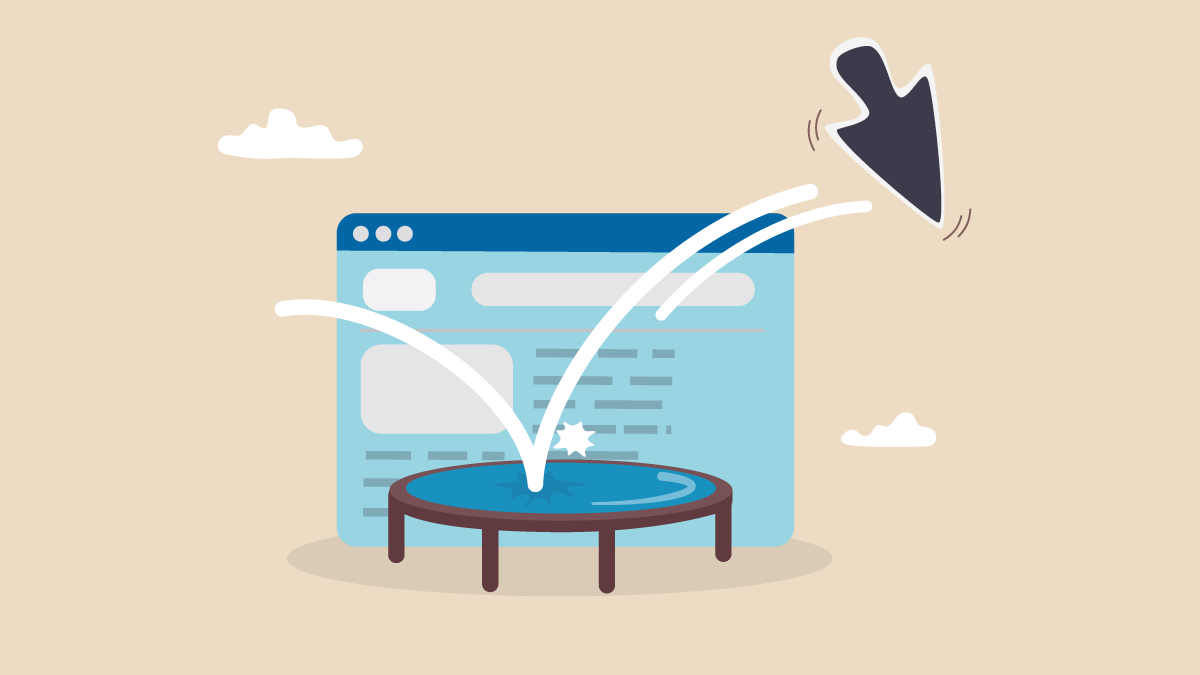
What is the bounce rate? And more importantly, what does bounce rate mean for SEO? This blog post will answer these questions and provide you with everything you need to know about rates and their impact on your website’s search engine ranking. We’ll also offer some tips on reducing rates and improving your SEO.
What is the Bounce Rate?
Bounce rates are a term that refers to the number of visitors who enter a website and bounce back or leave immediately. A rate is usually determined by the percentage of visitors who only view one page on a website before exiting.
This number depends on several factors. For example, the user can find what they are looking for and move on. But, on the other hand, that could indicate they do not see where else to go, which means the user experience is somewhat lacking.
Another example is that they clicked and did not find what they were looking for. In that case, you should advise website analytics to discover why users changed their minds in the first place.
Let’s assume you have a product page with a low bounce rate. It’s likely because people find what they’re looking for and don’t need to look any further. Additionally, if you own a blog post with a high bounce rate, it could be because the content is insufficient or not relevant to what people are looking for.
In general, a high rate is not suitable for SEO because it indicates that people are not satisfied with the results on your website. That tells Google that it might not be the perfect result to show visitors.
What is a Good Bounce Rate?
That depends on several factors, including the website type you have, the purpose of the page, and the expectations of your visitors.
For example, if your main product is the blog itself, you expect a higher bounce rate than an eCommerce site. That’s because people who are just reading your blog post are more likely to bounce than people looking to buy something from your store.
The purpose of the page also plays a role in bounce rates. A landing page, for example, is designed to have a low rate because its purpose is to get users to stay and explore the rest of your website.
And finally, the expectations of your visitors also play a role in bounce rates. For example, if you have a website that provides information or entertainment, you would expect a higher rate than a website that offers services.
Therefore a reasonable bounce rate depends on the type of website you have, the purpose of the page, and the expectations of your users. For instance, if someone visits your site, views two pages, and then leaves, their rate would be 50%. The higher the rate, the less chance you provide what people are looking for on that page.
If your website has a low bouncing rate and a high time-on-page, it is in good shape. However, a high time on the page indicates that your content is engaging. Therefore, developing an exciting website is a far better use of your time than optimizing bounce rate.
Do Bounce Rates Affect SEO?
What bounce rates mean for SEO is a question that often comes up. The bounce rate has no impact on organic ranking. However, it has an indirect effect on other ranking factors that Google cares about, such as:
- slow page speed
- poor design
- bad mobile optimization
These metrics, when combined, can indicate whether or not you have created a good user experience.
They can be a useful metric when used with other data to determine how well your website is performing. However, to use bounce rates to your advantage, you need to understand what they mean and how they are calculated.
How to Reduce Bounce Rates
So, how can you change that bounce rate in your favor and improve your SEO? Here are some tips:
- Make sure your page is relevant to the keywords people are searching for
- Make sure your page is easy to read and navigate
- Write compelling content that will keep users engaged
- Place links to other relevant pages on your website throughout your content
- Use images and videos to break up the text and make it more engaging
- Different Test versions of your page to see which one produces the lowest rate
- Monitor your bounce rates regularly and adjust your content accordingly as needed
How to Improve Your SEO
Like anything in life, there is always something you can do to improve your SEO with a low bounce rate. For starters, make sure that your website is mobile-friendly and responsive. Many people browse the internet on their phones, so if your website isn’t optimized for mobile, they’re likely to bounce.
You can also enhance your bounce rate by ensuring that your website is well-optimized for search engines. Make sure you use the right keywords and that your pages. You can also increase the speed of your website, as a slow loading page is another common cause of high bounce rates.
If you’re looking to decrease the number of visitors that abandon your website and improve your SEO, these are some things you can do to get started. With a bit of effort, you can see a big difference in your website’s performance.
Bounce rates are an essential metric to monitor for your website’s SEO. Using the advice above can reduce the number of users jumping off your website and improve your ranking on search engine results pages. For more information on bounce rates and what an SEO agency can do for you, contact us today!




